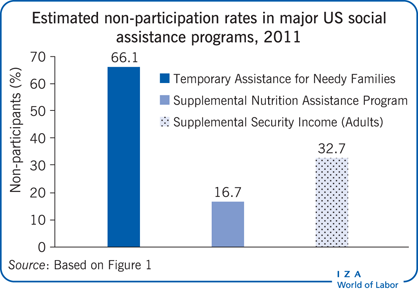Elevator pitch
Social assistance programs are intended to improve people’s well-being. However, that goal is undermined when eligible people fail to participate. Reasons for non-participation can include inertia, lack of information, stigma, the time and “hassle” associated with applications and program compliance, as well as some programs’ non-entitlement status. Differences in participation across programs, and over time, indicate that take-up rates can respond both positively and negatively to policy change. However, there are clearly very identifiable ways in which relevant agencies can improve take-up.

Key findings
Pros
Although there are many tangible and intangible barriers to participation in some social assistance programs, there are strategies that agencies and organizations can follow to improve access.
Increased access can reduce stigma—potential clients are more likely to take up benefits when they see other people and broader groups of people also taking up benefits. This can have reinforcing effects on participation.
Strategies that simplify program rules can lower agencies’ administrative costs.
Cons
Some strategies for increasing participation, such as outreach campaigns and more convenient operating hours, have direct costs.
Other strategies, such as simplified program rules or less onerous reporting requirements, can undermine program integrity.
Increased assistance program access is costly in and of itself because more benefits will be used.
We lack information regarding how much specific access interventions change people’s behavior, making cost—benefit comparisons difficult.